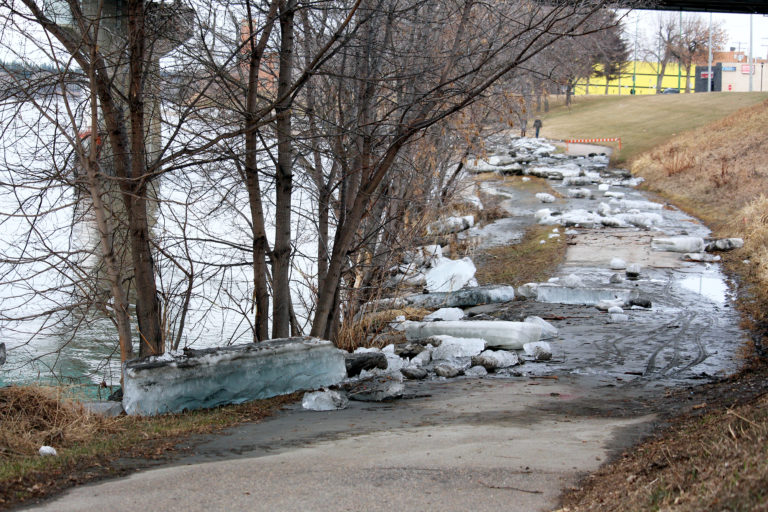
It’s been a record year for snowfall in Saskatchewan, but that won’t necessarily translate into high flood levels once it all melts.
That’s according to experts at the Water Security Agency (WSA), who released their first spring runoff forecast for 2022 on Thursday. The WSA conducted snow surveys in mid-February which show the high snowfall levels won’t be enough to compensate the drier than normal moisture conditions last fall.
In fact, a few areas in the southern part of the province will still see below-normal levels of runoff.
“It fluctuates from year to year,” WSA Communications Manager Sean Osmar said. “We’ve seen years where it’s been very dry and very low runoff, and we’ve seen years with very high (levels) and flooding. Right now, we’re not expecting any flooding from what we see.”
Although the WSA isn’t predicting flooding yet, that could change with more snowfall, especially for residents living north of Prince Albert towards La Ronge. Osmar said that part of the province received “a healthy amount of snow” and may receive slightly above normal runoff as a result.
If the area received another heavy snowfall before the end of the year, there might be flood problems, but Osmar said there’s no guarantee that will happen.
“It’s difficult to tell right now,” he said. “We have to wait and see for the actual melt to occur and what we might see. We still have a few weeks left of snowfall, it’s unfortunate to say, but we could still see some more snow accumulation, or if it warms up, even rain.”
Osmar added that the risk of flooding will depend on how fast the snow melts. If Saskatchewan sees a slow that, the flood risks start to decrease.
“(With) a slower melt, that water has a chance to soak into the soil, which is better for the producers, obviously, to have that moisture in the soil,” he said.
As of Thursday, residents living east of Moose Jaw are the only people in Saskatchewan forecasted to receive above normal runoff. Residents in the southwest will receive below-normal runoff, and may even have water shortages and water quality related issues later in the year.
The WSA reports significant snow pack in the northern part of the province, which could lead to flooding, with more snow and severe ice breakup in the North Saskatchewan River. Prince Albert residents are encouraged to remain vigilant near melting waterways.
The elevated risk of “dynamic ice breakup” on the North Saskatchewan means residents could see ice jamming and flooding comparable to what happened in 2020.
The alpine snowpack is generally well-above normal, which means runoff flowing into the South Saskatchewan River system and Lake Diefenbaker will be better than in 2021.
The next WSA forecast is due in early April.
